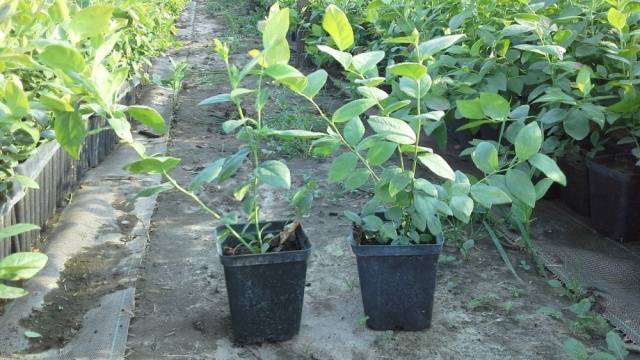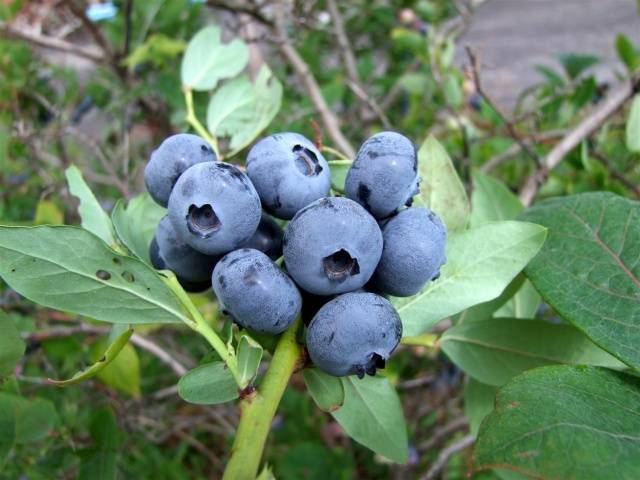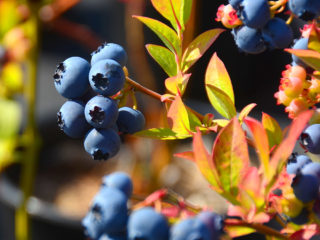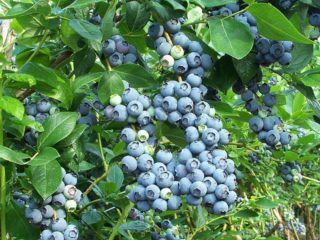Content
Blueberry Spartan is a well-known variety that has become widespread in America and Europe. Its main advantages are winter hardiness, presentation and good taste.
Breeding history
Spartan blueberries have been cultivated since 1977. The variety was bred in the USA. It uses wild blueberry varieties native to the North American swampy areas.
Description of berry culture
The Spartan blueberry variety has a number of features that make it stand out from other varieties.
General understanding of the variety
Blueberry Spartan is a deciduous perennial shrub 1.5-2 m high. The shoots are powerful and erect.
The leaves are simple, elongated, dark green in color. Young foliage of bright green color. In September, the leaves turn red, so the shrub takes on a decorative look.
The root system is branched and fibrous, lies at a depth of 40 cm. The roots grow when the soil warms up and until the end of spring. Then their growth stops and resumes with the onset of autumn. When the temperature drops, the root system stops growing.
Flowers in the Spartan variety are formed at the ends of the shoots. Flower buds are located along the entire length of the shoots. 5-10 flowers emerge from each bud.
Berries
Characteristics of the Spartan variety:
- light blue color;
- rounded shape;
- average weight 1.6 g;
- size 16-18 mm;
- dense pulp.
The berries have a pleasant sour taste and pronounced aroma. The tasting properties are estimated at 4.3 points.
Characteristic
When choosing a blueberry variety, its main characteristics are taken into account: winter hardiness, fruiting time, disease resistance.
Main advantages
Tall blueberries Spartan do not tolerate excess moisture in the soil. When caring for a variety, watering is necessarily normalized.
The Spartan variety has high winter hardiness. The bushes endure even harsh winters under the snow cover. Shoots do not freeze.
Due to the dense skin, the berries endure long-term transportation. It is recommended to transport fruits in containers equipped with temperature controllers.
Blueberries need a special soil composition. To obtain a high yield, the plants are provided with constant care: pruning, feeding and watering.
Flowering period and ripening time
In the middle lane, blueberries bloom in early or mid June, depending on the climatic conditions of the region. Due to late flowering, the buds are not susceptible to spring frosts.
Spartan is a mid-season variety. Ripening of berries begins in late July - early August.
Yield indicators, fruiting dates
Fruiting of Spartan blueberries is extended in time and is about 2.5 - 3 weeks. During the ripening period, the berries are removed in several approaches, from 3 to 5 times. Harvesting begins when the fruits are completely colored. Berries ripening in 1-2 approaches have the best presentation and large sizes.
The yield of the Sparta variety is from 4.5 to 6 kg. The first berries begin to be harvested 3-4 years after planting the bush.The culture brings a stable harvest for 6-8 years.
Scope of berries
The Spartan variety is recommended for fresh consumption. Berries are used to prepare vitamin tea, fruit platter, cake decorating.
According to reviews of Spartan blueberries, the fruits tolerate freezing and drying well. They make jam, jams, juices, compotes.
Disease and pest resistance
Blueberry Spartan is resistant to moniliosis diseases, shoot death, berry mummification. The variety retains an average resistance to pests.
Advantages and disadvantages of the variety
Advantages of the Spartan variety:
- good taste;
- high transportability of berries;
- self-fertility;
- resistance to disease.
Disadvantages of Blueberry Spartan:
- sensitivity to high humidity;
- requires acidification of the soil;
- takes a long time to bear fruit.
Landing rules
Correct planting and caring for Spartan blueberries will allow you to get stable high yields. Be sure to analyze the quality of the soil and add nutrients.
Recommended timing
The culture is planted both in autumn and spring. Planting in the spring is more preferable, since the plant has time to take root during the growing season. Work is carried out after the snow melts, but before the buds of the trees swell.
Choosing the right place
A well-lit area, protected from the effects of the wind, is allocated for the bushes. Constant sun exposure will ensure high yields.
It is important to prevent moisture stagnation on the site. The root system suffers from cold water, the bush develops slowly and does not bear fruit.
Soil preparation
Blueberries prefer acidic soil with a pH of 4 to 5. The soil for the crop is obtained by mixing peat with sand, sawdust and needles. If the soil is clayey, a drainage layer is required.
Selection and preparation of seedlings
Spartan seedlings are bought in proven centers or nurseries. It is recommended to choose plants with a closed root system. Before planting, the blueberries are carefully removed from the container and the roots are kept in water for 15 minutes.
Algorithm and scheme of landing
The order of planting blueberries Spartan:
- Pits with a diameter of 60 cm and a depth of 50 cm are dug on the site. 1 m is kept between the bushes.
- A drainage layer of crushed stone or pebbles is poured at the bottom of the pit. A prepared substrate is placed on top to form a small hill.
- The plant is carefully planted on a mound, the roots are straightened and covered with earth.
- The seedling is watered abundantly, the soil is covered with peat, straw or bark with a layer of 5 cm.
Follow-up care of the culture
To obtain a high yield, blueberries are provided with constant care. Be sure to ration watering, apply fertilizers, prune the bush.
Necessary activities
When growing Spartan blueberries, water it sparingly, the soil should not dry out and contain too much moisture. Mulching the soil with sawdust helps to reduce the number of watering. The optimum mulch layer is 5 to 8 mm.
In spring, blueberries are fed with mineral complexes containing nitrogen, phosphorus and potassium. Every 10 days, to acidify the soil, the bushes are watered with a solution of colloidal sulfur.
Loosening of the soil provides oxygen and nutrients to the roots. As a result, the growth and yield of the bushes are improved.
Shrub pruning
Pruning is required for blueberries over 6 years old. In the lower part of the bush, shoots are removed. Branches over 6 years old are also cut out. From 3 to 5 of the largest shoots are left on the bush.
Pruning allows you to rejuvenate the bush and increase its yield. The procedure is carried out in late autumn after leaf fall or in spring before the beginning of the growing season.
Preparing for winter
With proper planting and caring for Spartan blueberries in the Moscow region, the bushes tolerate winters well without shelter. In autumn, 100 g of superphosphate is introduced under the plant.
Young seedlings are insulated with agrofibre and spruce branches. In winter, snow is thrown over the bush.
Collection, processing, storage of crops
Blueberries are harvested by hand or mechanized. The berries are frozen, dried or processed into blanks.
According to reviews of the Spartan blueberry variety, due to the dense skin, the berries tolerate long-term storage well. The fruits are kept in a refrigerator or other cool place.
Diseases and pests, methods of control and prevention
The most dangerous blueberry diseases are shown in the table:
Disease | Symptoms | Treatment methods | Prophylaxis |
Powdery mildew | Yellowish spots on the leaves; over time, the leaf plate becomes wrinkled. | Spraying with Fundazol or Topaz preparations. |
|
Rust | Brown spots on the leaves. Gradually, the foliage turns yellow and falls off ahead of time. | Treating bushes with Bordeaux liquid or fungicide Abiga Peak. |
Common crop pests are listed in the table:
Pest | Description of defeat | Ways to fight | Prophylaxis |
Aphid | Leaves curl and fall, fruits shrink. | Treatment with Aktara. |
|
Kidney mite | The pest eats away the buds, sucks the juice from the leaves. | Spraying the bush with Nitrafen or iron sulfate. |
Conclusion
Spartan blueberries produce high yields with constant care. Bushes need feeding, watering and pruning.
Testimonials













